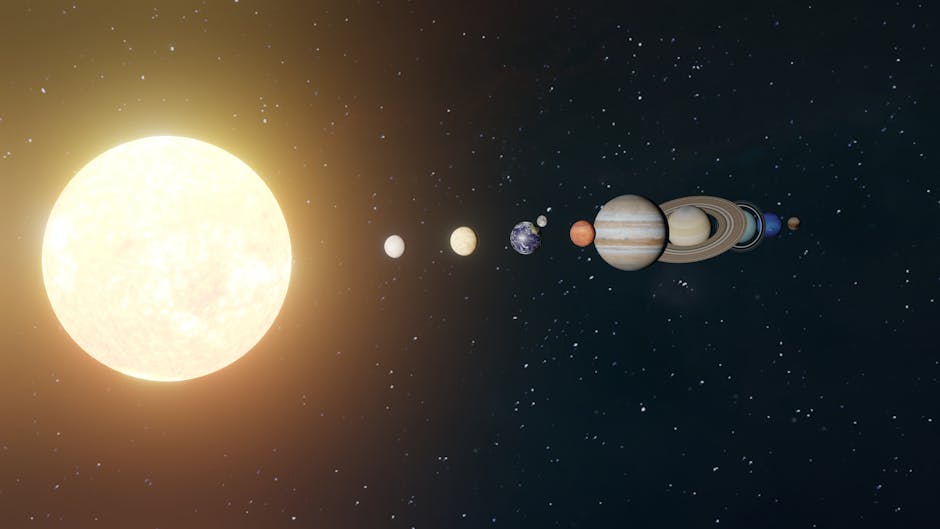
Imagine a world. Not one orbiting a star like our Earth, bathed in the comforting glow of a sun, but a world adrift. A planet sailing through the deep, unending darkness of interstellar space, its surface possibly frozen solid, its skies perpetually black. These aren’t merely science fiction constructs; they are very real objects in our universe, commonly known as rogue planets or free-floating planets. For astronomers, these solitary wanderers present a compelling enigma: how does a celestial body, presumably formed within a star system, get cast out into the cosmic void to live a life without a star to call home?
The story of these isolated worlds begins, ironically, in the tumultuous cradle of planetary birth. When new stars ignite, they are often surrounded by vast disks of gas and dust known as protoplanetary disks. Within these disks, gravity gathers material, slowly building up protoplanets that eventually clear their orbits and grow into the planets we recognize. Our own solar system, with its orderly procession of eight planets around the Sun, gives us a somewhat biased view of this process. Many nascent planetary systems are far less stable, especially in their early, formative years. The gravitational dance between multiple young planets, sometimes even several nascent stars, can become incredibly complex and violent.
Think of it like a cosmic game of billiards, but with gravity as the cue stick. In a densely packed young system, larger planets, particularly gas giants, exert immense gravitational influence. As these behemoths migrate through the protoplanetary disk, or even when their orbits come too close to one another, their gravitational pull can deliver a powerful “kick” to smaller, less massive planets. If a planet receives enough energy from such an encounter, it can achieve escape velocity, breaking free from the gravitational bonds of its host star entirely. This isn’t a gentle push; it’s a violent expulsion, sending the world hurtling into the vast emptiness between star systems. Our own Jupiter, for instance, is thought to have migrated inward and then outward in the early solar system, potentially shaping the orbits of other planets and perhaps even ejecting some that formed closer to the Sun.
Beyond the internal dynamics of a developing star system, external forces can also play a role in creating these free-floating worlds. Star clusters, the stellar nurseries where most stars are born, are incredibly dense environments. Multiple young stars, along with their developing planetary systems, are packed closely together. In such a congested neighborhood, the gravitational pull of a passing star, or even a binary star system, can interfere with a planet’s stable orbit. A close stellar flyby might tug at a planet, slowly pulling it away from its parent star’s influence, or even directly sling it out into interstellar space. This is less like billiards and more like a massive, unannounced visitor disrupting a carefully balanced mobile. The gravitational disruption can simply be too powerful for the planet to remain bound.
Detecting these rogue planets presents a unique challenge for astronomers. Without a star to illuminate them, they don’t reflect light. They also don’t generate significant light themselves, unlike stars. This means traditional methods of exoplanet detection, such as the transit method or radial velocity, are ineffective. However, one ingenious technique has proven successful: gravitational microlensing. When a massive object, like a rogue planet, passes directly between Earth and a more distant star, its gravity can act like a lens, temporarily magnifying and brightening the light from that background star. By carefully observing these brief brightening events, scientists can infer the presence and even estimate the mass of the unseen intervening object. This method has already led to the discovery of several candidate free-floating planets, some with masses comparable to Earth or Jupiter. Examples include objects like OGLE-2016-BLG-1195Lb and KMT-2016-BLG-1107.
The implications of these discoveries are profound. Current estimates, though still based on limited data, suggest that there could be billions, perhaps even trillions, of these free-floating planets wandering the Milky Way galaxy alone. Some models even propose that they might outnumber the stars in our galaxy. This means that a significant portion of the universe’s planetary mass could reside not within star systems, but scattered throughout the interstellar medium. Furthermore, it raises questions about habitability. While incredibly cold and dark on the surface, some larger rogue planets, particularly those with substantial internal heat from their formation or radioactive decay, might harbor subsurface oceans of liquid water, potentially offering conditions for life. Such worlds, sealed beneath a thick icy crust, might have evolved completely isolated from stellar energy, deriving all their warmth from within.
The existence of these free-floating planets broadens our understanding of what a “planet” truly is and how diverse the celestial landscape can be. They are not merely failed stars or lost moons, but entire worlds that have embarked on an unprecedented journey across the cosmos, unburdened by the gravitational demands of a star. These solitary wanderers, charting their own course through the vast darkness, remind us that the universe holds countless forms of celestial bodies, many of which defy our traditional categories and continue to challenge our cosmic imagination.